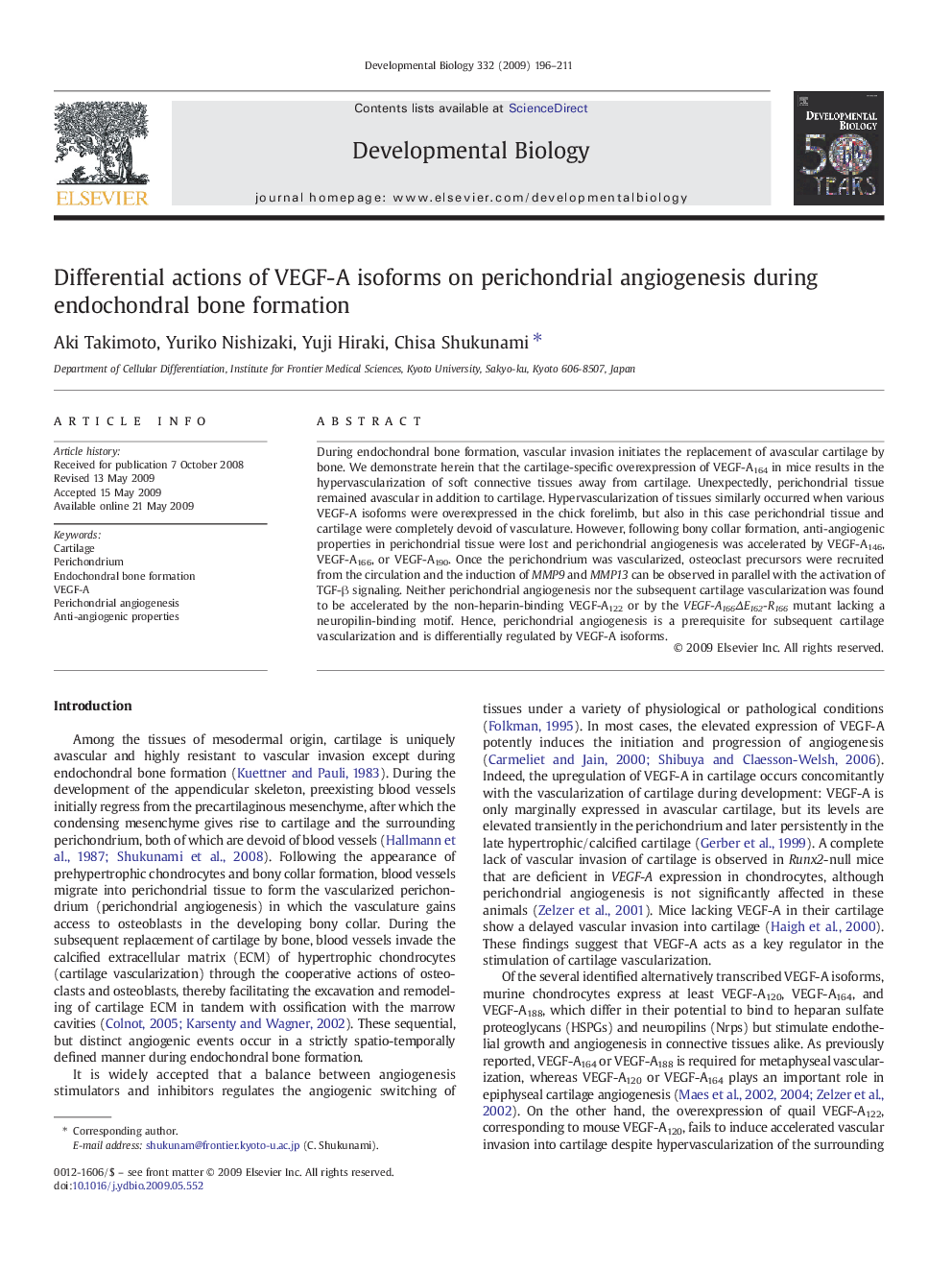| Article ID | Journal | Published Year | Pages | File Type |
|---|---|---|---|---|
| 2174109 | Developmental Biology | 2009 | 16 Pages |
During endochondral bone formation, vascular invasion initiates the replacement of avascular cartilage by bone. We demonstrate herein that the cartilage-specific overexpression of VEGF-A164 in mice results in the hypervascularization of soft connective tissues away from cartilage. Unexpectedly, perichondrial tissue remained avascular in addition to cartilage. Hypervascularization of tissues similarly occurred when various VEGF-A isoforms were overexpressed in the chick forelimb, but also in this case perichondrial tissue and cartilage were completely devoid of vasculature. However, following bony collar formation, anti-angiogenic properties in perichondrial tissue were lost and perichondrial angiogenesis was accelerated by VEGF-A146, VEGF-A166, or VEGF-A190. Once the perichondrium was vascularized, osteoclast precursors were recruited from the circulation and the induction of MMP9 and MMP13 can be observed in parallel with the activation of TGF-β signaling. Neither perichondrial angiogenesis nor the subsequent cartilage vascularization was found to be accelerated by the non-heparin-binding VEGF-A122 or by the VEGF-A166ΔE162-R166 mutant lacking a neuropilin-binding motif. Hence, perichondrial angiogenesis is a prerequisite for subsequent cartilage vascularization and is differentially regulated by VEGF-A isoforms.
